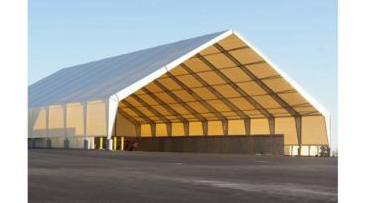Introduction
Aluminum alloy tents, or temporary event structures, are widely used in outdoor weddings, trade shows, exhibitions and industrial storage. They offer cost-effective flexibility compared to permanent buildings.
Wind resistance is critical for these open-area structures, as it ensures safety of people and property. This article explores the wind-resistant capabilities of aluminum alloy tents.
Structure and Materials
Frame Structure
The tent's frame is key to wind resistance, typically using a modular truss structure with triangular elements—engineering's most stable shape. This design effectively withstands wind's lateral forces.
Precision-engineered joints with high-quality connectors distribute forces evenly. Advanced multi-axis connectors transfer wind-induced stress across the frame, avoiding dangerous concentration points.
Material Quality
Aluminum alloy's high strength-to-weight ratio enhances wind resistance: its lightness reduces wind lift risk and simplifies secure anchoring, while maintaining sufficient strength to resist wind forces.
Aluminum's natural oxide layer prevents corrosion from outdoor moisture, preserving material strength over time and ensuring consistent wind resistance throughout the tent's service life.
Design Features for Wind Resistance
Shape Design
Gable-shaped (A-frame) tents use sloping sides to deflect wind upward, reducing surface pressure. This design also sheds rain/snow, avoiding extra weight that could compromise wind stability.
Another popular shape is the arch - shaped tent. The arch - shaped tent has a continuous curved profile. This shape distributes the wind - induced forces more evenly around the frame. The curved structure has no sharp corners or edges where the wind could cause turbulence and concentrated stress. Instead, the wind smoothly flows around the arch, minimizing the impact on the tent. The arch - shaped tent also has a relatively large internal space without the need for many internal supports, which not only provides more usable space but also reduces the risk of internal components being damaged by the wind. In addition, the inherent stability of the arch shape in engineering principles further contributes to its good wind - resistance performance.
Connection and Fixing
The connection of each component in the aluminum alloy tent and its fixing measures are crucial details for enhancing wind - resistance. The connection between the aluminum alloy profiles in the tent frame usually adopts high - strength bolts or specialized connectors. These connection methods ensure that the different parts of the frame are firmly joined together. High - strength bolts can withstand large shear and tensile forces. When the wind exerts force on the tent, the bolts prevent the profiles from separating or rotating, maintaining the integrity of the frame structure. Specialized connectors are often designed with specific geometric shapes and locking mechanisms.
Wind Resistance Ratings and Standards
Aluminum alloy tents are often rated according to their wind - resistance capabilities, and these ratings are based on a combination of factors such as the tent's design, materials, and construction methods. In general, wind - resistance ratings are expressed in terms of wind speed, and they follow certain industry standards.
For example, in many regions, tents are classified into different wind - resistance levels. A common classification might include tents with a basic wind - resistance rating that can withstand wind speeds of around 60 - 80 km/h. These tents are suitable for normal outdoor events in areas with relatively mild wind conditions, such as small - scale garden parties or local community gatherings in inland areas where strong winds are not common.


Hi! Welcome back.
How are you doing?

+86 17712768856
NO.1319-1 Xicheng Rood Qingyang village, Jiangyin City,Jiangsu Province,China
Subscribe today and get educated and entertained with the monthly SYXTENT email